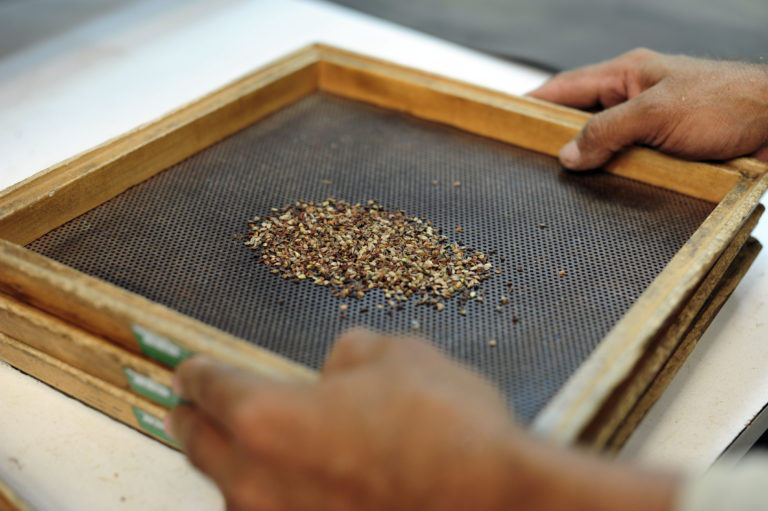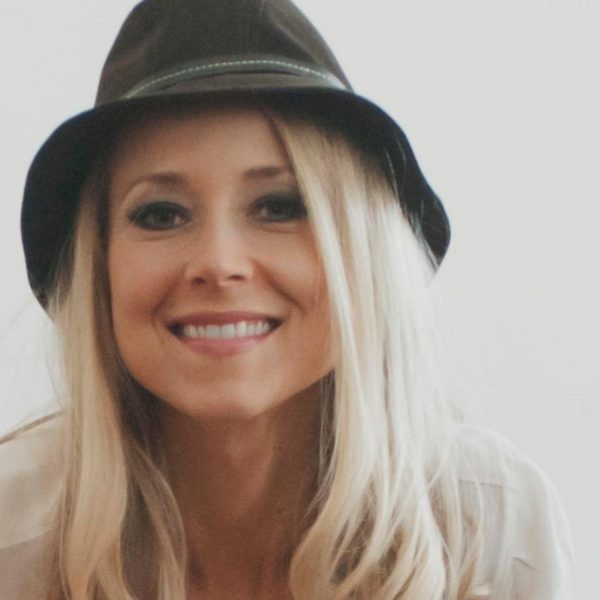
Image by CIAT.
The Wind Doesn’t Stop at Customs: A Global Seed Vault Models a New Way Forward
This past weekend, communities around the world celebrated Earth Day with fairs and projects in myriad languages. As with any day or week officially designated for a cause, Earth Day is only as meaningful as the action and awareness it prompts locally.
Still, we face an ecological crisis so profound that working together across borders is our only chance at a remedy. One state might pass laws banning fracking, say, but if a neighboring state doesn’t do the same, both of them will shake with fracking-induced earthquakes.
An ecosystem, after all, is about connectivity. Mother Earth cares nothing for our political boundaries. The wind doesn’t stop at customs.
Perhaps the most heartening event this Earth Day, thus, was the signing of a historic environmental pledge by 175 countries, according to the United Nations. With those symbolic signatures, the Paris Agreement — negotiated last year to curb global warming — moves closer to entering into force. Unlike with similar efforts in years past, major carbon-emissions offenders China and the United States are onboard this round.

We have little precedent for such massive-scale, preventative teamwork. It’s reactive teamwork, too, to be sure; the scientific community has been warning governments to take such climate action. There does seem now a semblance of forward thinking that, while conflicting economic interests are still in play, suggests a humble reckoning with our reliance on the planet that we’ve for so long mistreated.
Without great care, such a revolutionary dialogue could fall apart before meaningful action takes place. Where might world leaders look for a model path forward?
Frozen inside a mountain in the Arctic Circle, hundreds of millions of seeds rest in crates marked by country: Kenya, Canada, North Korea. The Svalbard Global Seed Vault, construction of which began near Norway in 2006, houses the world’s largest seed collection; nearly every country in the world is represented in protective permafrost. It is, as I think of it, an epic, global version of the rural grain coop I worked at during the summer wheat harvest in Kansas.
Also known as “the Doomsday Vault,” the seed project is not concerned with political units but the planet and humanity they all share. If global crisis strikes — say, famine brought on by climate change — one cold mountain holds the keys for regenerating agriculture and life.
Cary Fowler, a Tennessee-born agriculturalist who helped create the seed cache as head of the Global Crop Diversity Trust, sees it as an “insurance policy for world agriculture” on a planet where ancient seeds experience the unprecedented effects of the Anthropocene.
In a 2012 short documentary, Fowler paused deep inside the vault to point out what he described as “one of the most interesting” rows of containers, labeled for the ICARDA agricultural genebank in Aleppo, Syria:
“They have a safety duplicate of their collection here in Svalbard, which is a great thing since the city and the area is in a state of war right now. Doomsday happens every day. It happens in small bits and pieces. It happens quietly. So here is a very quiet solution.”
Indeed, ICARDA would make the first-ever major withdrawal from the seed bank — due not to climate change but political war. Last fall, after violence threatened their work in Aleppo, scientists retrieved seeds from the vault to rebuild their inventory in safer regions. The Svalbard vault exists at the eye of a global political storm but reminds us that the act of protection can be cooperative and life-affirming rather than combative and destructive. It can take the form of seeds rather than bullets.
Brian Lainoff of Crop Trust, an international organization based in Germany working to safe-guard crop diversity, told Euronews:
“When you’re inside the vault, politics don’t matter. What matters is keeping the seeds safe.”
Outside the vault, though, the personal is always political. I grew up among farmers who saved seeds for generations. In recent decades, however, that ancient practice has butted up against corporate interests. The U.S. court system has consistently upheld the patenting of living organisms such as plants and seeds, paving the way for corporations such as Monsanto to successfully sue small farmers.

Litigious, profit-driven entities by definition tend to be selfish and have a short-term focus. Their impulses have driven our environmental policy since the industrial revolution. By contrast, in establishing the Svalbard vault, people from such disparate places as the Fertile Crescent and the Blue Ridge Mountains accomplished an enormous feat toward a common goal. The vault’s seeds, thousands of which were saved from extinction, will still be there centuries from now, barring cataclysmic catastrophe upon the mountain itself. Those reading this may long be dead when humanity makes its most critical withdrawals from this biodiversity trove.
Like the “seven generations” wisdom of the Iroquois people, the Svalbard project’s underlying intentions supersede political views and immediate, selfish needs. Part of the Iroquois Confederacy, the Onondaga Nation, lies about 200 miles north of New York’s United Nations headquarters. Onondaga leader Oren Lyons has said of tribal wisdom:
“When you sit and you council for the welfare of the people, think not of yourself nor of your family nor even your generation… Make your decisions on behalf of the seventh generation coming. Those faces looking up from the earth… layer upon layer, waiting their time… Defend them, protect them, they’re helpless, they’re in your hands… You do that, you yourself will have peace.”

If you had access to a vault that could preserve something so precious that you hoped it might survive the dangerous forces of modern society — politics, war, capitalism — to be enjoyed by your grandchildren’s grandchildren, what would you put there?
Regardless of country, party, or religion, ultimately we are all primal creatures of this earth who rely on nature for both survival and beauty. I suspect that most of us therefore would choose many of the same things for such preservation: clean air, drinkable water, wild animals, trees, grass, and flowers.
Toward such a goal we might continue to act locally and think globally, as goes a familiar bumper sticker. Now we also call upon our leaders to act globally. Together, as both communities and nations, we must take responsibility on behalf of ourselves, our planet, and its inhabitants to come — an ecosystem that spans not just national borders but the illusory boundaries of time.

